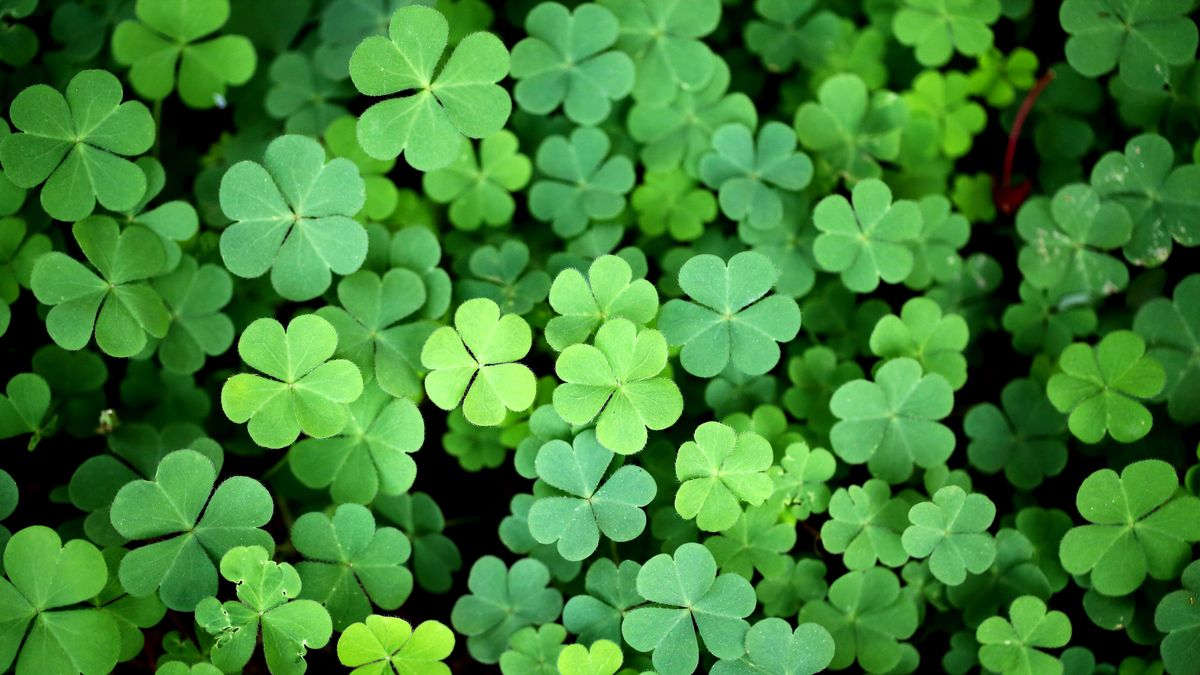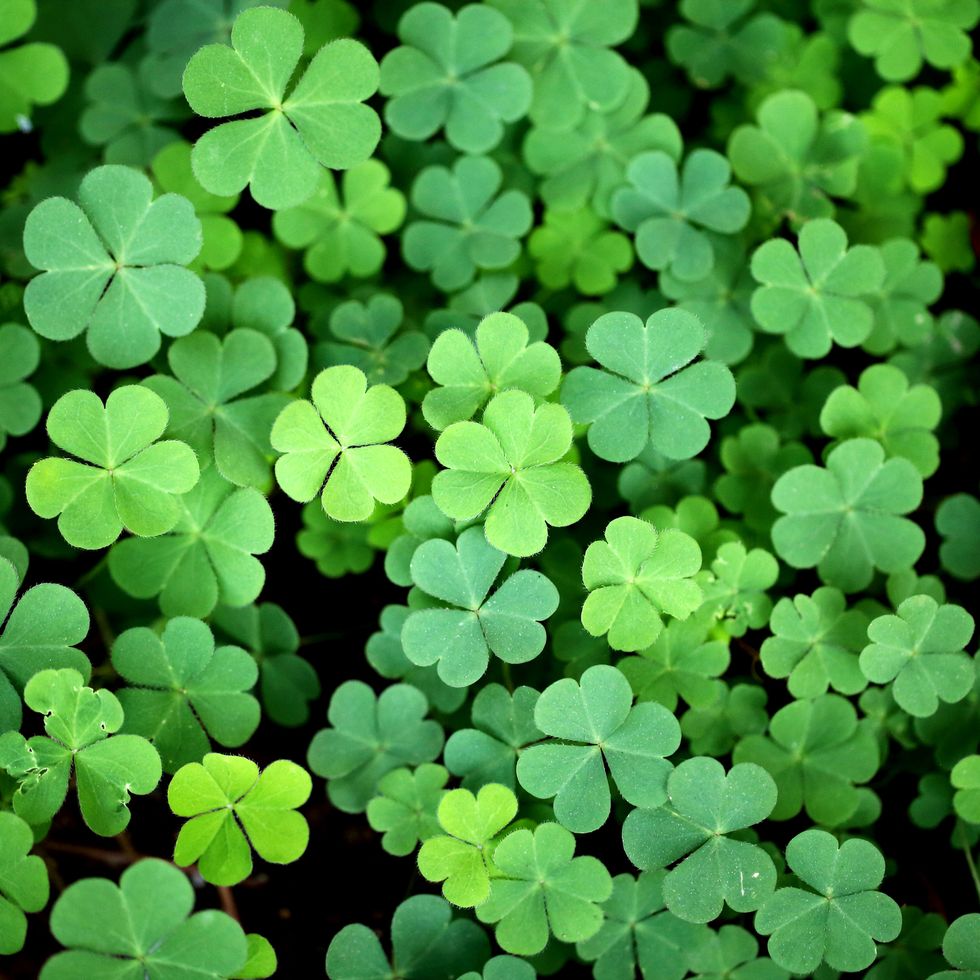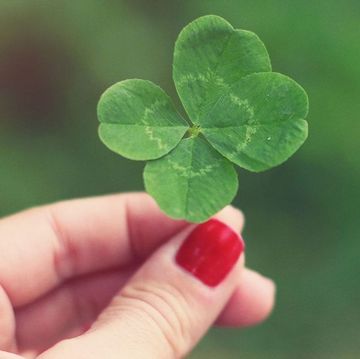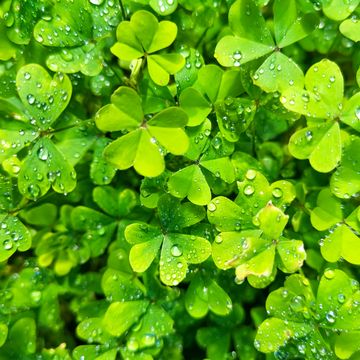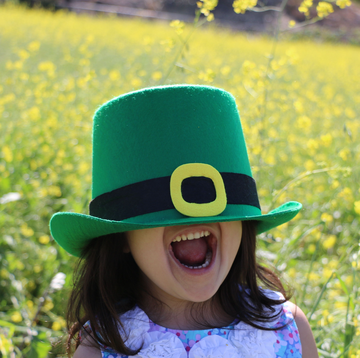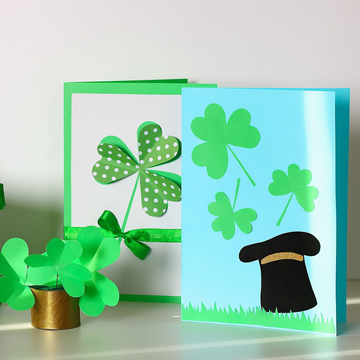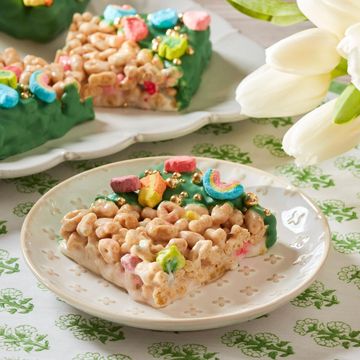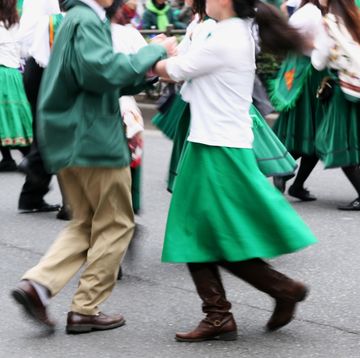For most of the year, the color green gets a bad rep for being synonymous with envy, materialism, and even nausea, among other things. That is, until March 17 rolls around, and the color is associated with luck instead! A successful St. Patrick's Day shindig is marked by ever-flowing green beer, emerald-hued foods, and festive decorations featuring the traditional symbols of the holiday, like leprechauns, rainbows, pots of gold, and gorgeous green shamrocks!
Or wait, are those clovers? The whole shamrock versus clover confusion plays out in so many aspects of the holiday, whether we notice it or not. They're often used interchangeably in DIY decorations and even as St. Patrick's Day accessories. But as many an Irish lad or las will tell you, there is indeed a distinct visual and symbolic difference between shamrocks and clovers. One of them has a special place in the history of St. Patrick's Day and religious lore about Saint Patrick. Here, we explain what that difference is and answer perhaps the biggest question of all. Which is lucky: shamrocks or clovers? 🍀
Shamrock vs. clover: what's the difference?
All shamrocks are clovers, but not all clovers are shamrocks. How can that be, you ask? Clover is the common name for plants of the genus Trifolium (from the Latin tres 'three' + folium 'leaf'), which is comprised of about 300 species. As you might guess from the name, clovers typically have three leaves. Occasionally, though, clovers will grow four leaves.
So, the shamrock symbol is a typical clover with three leaves. St. Patrick's Day shamrocks are usually green, but clovers can also be purple, green, or white.
Shamrocks have been the unofficial national flower of Ireland for centuries, according to TIME. The patron saint of Ireland, Saint Patrick, used the shamrock as a symbol to explain the Holy Trinity when he was converting the Irish to Christianity. Or so the legend goes. Either way, three-leaf clovers are plentiful in the emerald isle, and it eventually became common practice to wear them for the holiday.
Which is lucky: shamrock or clover?
While indistinguishable to most, the shamrock and clover differ in many ways. The shamrock carries religious ties, while the four-leaf clover is considered a sign of luck due to its exceeding rarity. In fact, around one out of 10,000 clovers have four leaves. And while shamrocks grow in clumps, four-leaf clovers are rare and grow one at a time.
As for the difference in symbolism between shamrocks and clovers, shamrocks are recognized as representations of the Holy Trinity: the Father, the Son, and the Holy Spirit. On the other hand, the four leaves of a clover symbolize love, faith, hope, and luck. So, if you want to find a four-leaf clover in addition to your St. Patrick's Day shamrocks to double your luck, you better start searching ASAP!

Micaela Bahn is a freelance editorial assistant and recent graduate from Carleton College, where she majored in English literature. She loves running, photography, and cooking the best new recipes.
